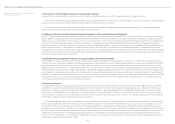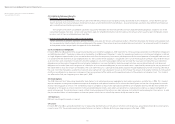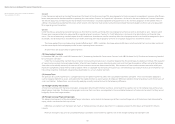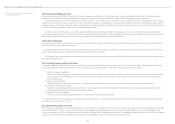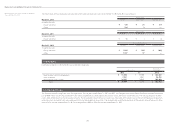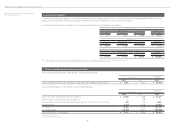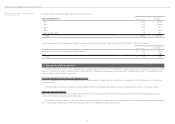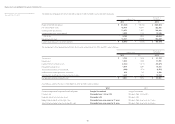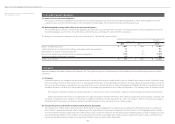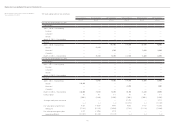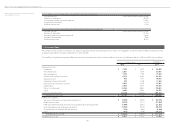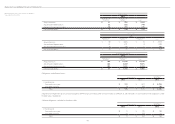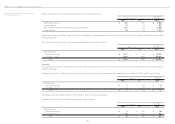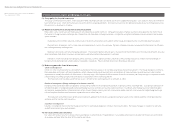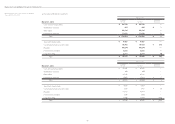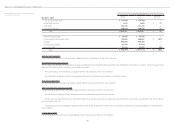Brother International 2012 Annual Report Download - page 40
Download and view the complete annual report
Please find page 40 of the 2012 Brother International annual report below. You can navigate through the pages in the report by either clicking on the pages listed below, or by using the keyword search tool below to find specific information within the annual report.
39
Notes to Consolidated Financial Statements
Brother Industries, Ltd. and Consolidated Subsidiaries
Year ended March 31, 2012 9. Asset Retirement Obligations
(a) Outline of asset retirement obligations
The Group’s asset retirement obligations are primarily the result of legal obligations for the removal of leasehold improvements, the restoration of premises to the
original condition, and the removal of liquid crystal in the karaoke machines upon the termination of the lease of the karaoke house.
(b) Method applied to computation of the asset retirement obligations
The estimated periods until the asset retirement obligations are settled are 1 to 34 years from the acquisition. The discounted rates used for computation of the asset
retirement obligations are 0.13% to 3.48% and 0.16% to 3.48% for the years ended March 31, 2012 and 2011, respectively.
The changes in asset retirement obligations for the years ended March 31, 2012 and 2011 were as follows:
Millions of Yen
Thousands of
U.S. Dollars
2012 2011 2012
Balance at beginning of year ¥ 1,022 ¥ 1,089 $ 12,463
Additional provisions associated with purchases of property, plant and equipment 78 —951
Reconciliation associated with passage of time 15 14 183
Reduction associated with settlement of asset retirement obligations (121) (81) (1,475)
Reversal associated with changes in contracts (21) —(256)
Balance at end of year ¥ 973 ¥ 1,022 $ 11,866
10. Equity
Japanese companies have been subject to the Companies Act. The significant provisions in the Companies Act that affect financial and accounting matters are summa-
rized below:
(a) Dividends
Under the Companies Act, companies can pay dividends at any time during the fiscal year in addition to the year-end dividend upon resolution at the shareholders meet-
ing. For companies that meet certain criteria such as (1) having a Board of Directors, (2) having independent auditors, (3) having a Board of Corporate Auditors, and (4) the
term of service of the directors is prescribed as one year rather than two years of normal term by its articles of incorporation, the Board of Directors may declare dividends
(except for dividends-in-kind) at any time during the fiscal year if the company has prescribed so in its articles of incorporation. The Company meets all the above criteria.
The Companies Act permits companies to distribute dividends-in-kind (non-cash assets) to shareholders subject to a certain limitation and additional requirements.
Semiannual interim dividends may also be paid once a year upon resolution by the Board of Directors if the articles of incorporation of the company so stipulate. The
Companies Act provides certain limitations on the amounts available for dividends or the purchase of treasury stock. The limitation is defined as the amount available for
distribution to the shareholders, but the amount of net assets after dividends must be maintained at no less than ¥3 million.
(b) Increases/Decreases and Transfer of Common Stock, Reserve and Surplus
The Companies Act requires that an amount equal to 10% of dividends must be appropriated as a legal reserve (a component of retained earnings) or as additional
paid-in capital (a component of capital surplus) depending on the equity account charged upon the payment of such dividends until the aggregate amount of legal
reserve and additional paid-in capital equals 25% of the common stock. Under the Companies Act, the total amount of additional paid-in capital and legal reserve may
be reserved without limitation. The Companies Act also provides that common stock, legal reserve, additional paid-in capital, other capital surplus and retained earn-
ings can be transferred among the accounts under certain conditions upon resolution of the shareholders.


